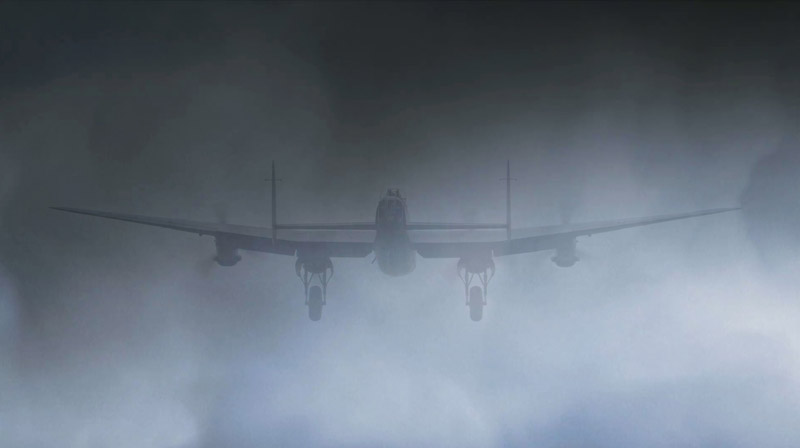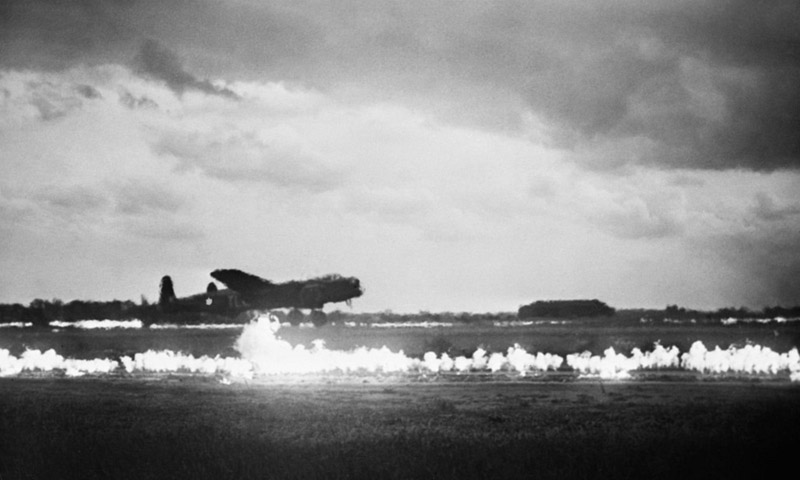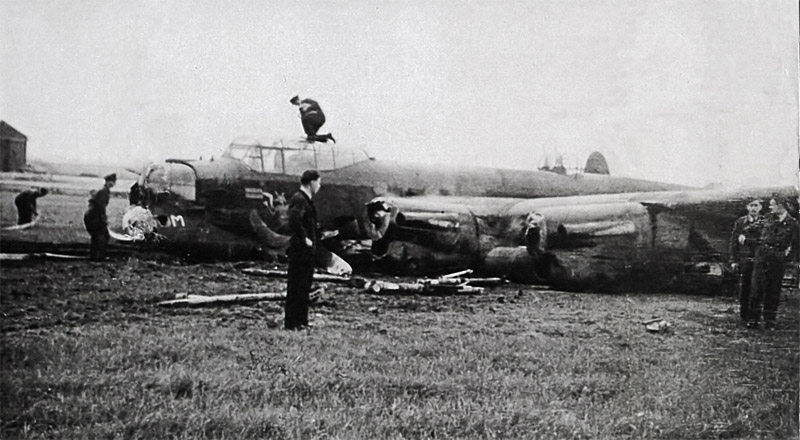Operations
Operations
Black Thursday 1943

As the Lancasters’ take-off time approached in the late afternoon of 16th December 1943
weather conditions were worsening and fog seemed likely but was not forecast.
(Credit: Royal Air Force)
Some 483 Lancasters and 15 Mosquitos targeted Berlin on the night of 16 December. As with any raid there were casualties over the target, with 23 Lancasters were shot down over enemy occupied territory, resulting in the deaths of 148 men, whilst 17 bombers returned with damage from enemy flak or fighters.
However, when the surviving bombers returned to England their crews found that, in many cases, their airfields were shrouded in thick fog and very low cloud. In some places it was a real ‘pea-souper’, with extremely poor visibility in which driving a car would be difficult, let alone trying to land a heavy bomber, possibly with damage, at 100 mph. Due to the cloudy conditions en route the crews had to rely on dead reckoning navigation and the Gee radio navigation aid to find their bases and then had to attempt to land using the Standard Beam Approach (SBA). Referred to as “landing on the beam,” SBA employed signals emitted by beacons in line with the main runway.
In practice, SBA approaches in these conditions were extremely difficult to complete successfully. At approach speed a Lancaster would cross the airfield in little more than 30 seconds if incorrectly lined up or if the pilot could not see the runway. The margin for error was exceedingly small and each failed attempt brought an increase in danger as the exhausted crews burnt up their remaining fuel, whilst 12 to 15 other aircraft might be stacked up at different heights in the hold all running short of fuel and all wanting to get down as quickly as possible, creating a real risk of collision.

On return from Berlin many Lancaster crews had to try to land
using the ‘Standard Beam Approach’ in thick fog and low cloud.
(Credit: Royal Air Force)
To make matters worse, the barometric pressure had changed considerably since take-off and the crews had then been passed an incorrect altimeter setting by radio, which in some cases gave an altimeter error of up to 1,000 feet.
The new Fog Investigation and Dispersal Operation (FIDO) system was operational at only three airfields: Graveley in Huntingdon, Downham Market in Norfolk, and Fiskerton, close to Lincoln. FIDO was a system of large pipes laid down both sides and across the threshold of the main runway on these airfields, carrying thousands of gallons of petrol. When the pumps were running, a fine jet of petrol from holes in the pipes could be set alight, creating a flare path and a wall of flame down the sides of the runway, the heat being intended to disperse fog and low cloud. Landing with FIDO could be an alarming experience with considerable turbulence caused by the heat and the obvious risk from the fire if the aircraft did not remain on the runway. Nonetheless, the FIDO system saved several aircraft that night when they were diverted from fog-bound airfields.

A Lancaster practising a FIDO landing at Graveley during daylight.
(Credit: Royal Air Force)
Inevitably, there were crashes elsewhere as crews flew into the ground attempting to land or simply ran out of fuel. Some crews elected to bail out, their aircraft also crashing, and two Lancasters, one from 103 Squadron and one from 576 Squadron, were lost when they collided in mid-air over Ulceby in Lincolnshire. The final tally registered 43 aircraft in total lost in crashes that night; losses due entirely to the weather that far outweighed those caused by flak or night fighters over enemy territory. Around 150 Bomber Command aircrew died in these crashes – young men who did not live to see Christmas in 1943 – and an additional 40 were injured.

A crashed Lancaster on an RAF airfield. This scene was repeated many times around the bomber airfields
and adjacent countryside on the night of 16-17th December 1943.
(Credit: Royal Air Force)